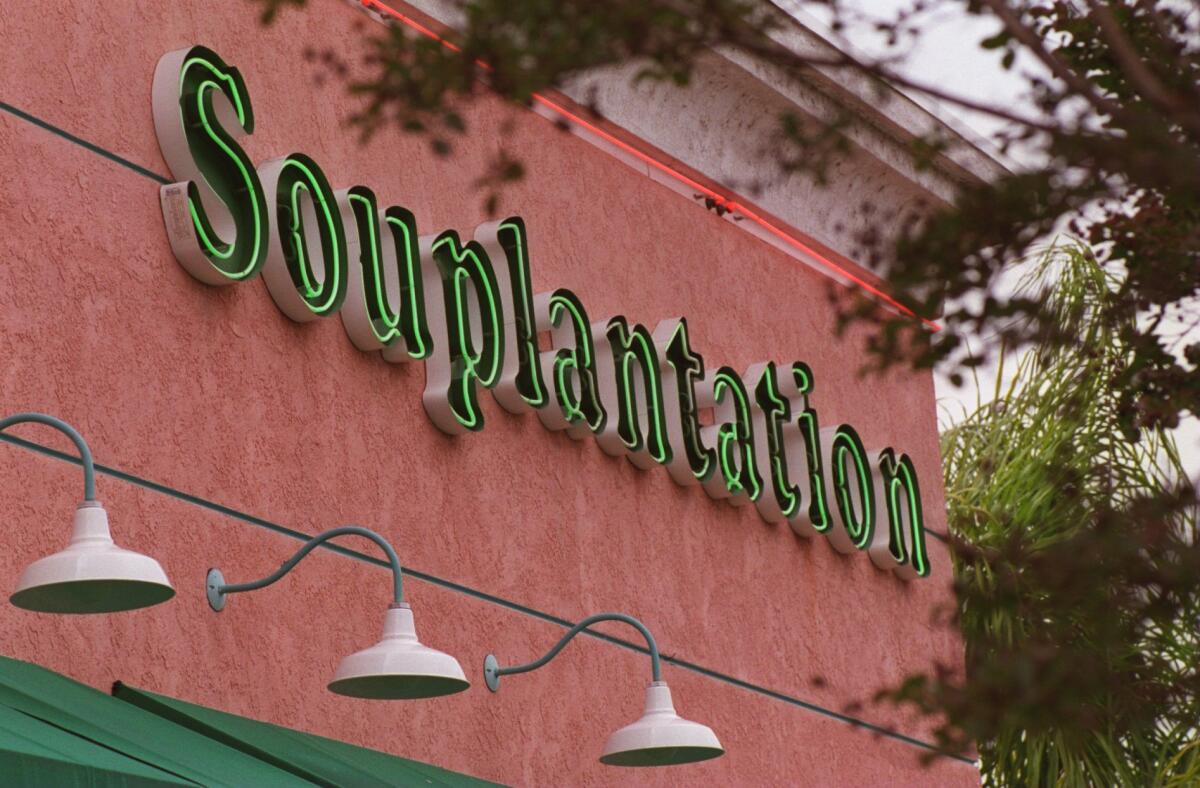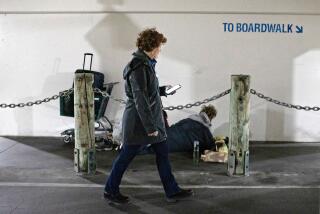Bankruptcies are way down during the pandemic. Here’s why

The pandemic produced the kind of fallout that gives economists nightmares. An initial drop in economic output that exceeded the Great Depression. Sudden job losses that outpaced modern records.
But there’s one economic bellwether that has seemingly painted an even rosy picture: bankruptcies, which have so far lagged behind their total in the year before the pandemic.
Yes, the number of personal and business bankruptcies filed last year in the country fell by nearly 30% from 2019 despite COVID-19. The decline was largely driven by a roughly 31% fall in personal bankruptcies but also a nearly 5% slide in filings due to business debts, according to U.S. Bankruptcy Court statistics.
The court’s Central District of California — which includes Los Angeles, Orange and five other counties — has been no exception, experiencing a 27% decline in all cases, including a 15% decline in business-related filings.
Filings are still down so far this year, and to get an understanding of how that might be possible consider two restaurants that closed after the pandemic hit: the popular Souplantation buffet chain and Olive Tree Restaurant, a stand-alone Middle Eastern eatery in Anaheim.
With more than 4,000 employees and 97 restaurants operating under two names in 10 states, Souplantation’s parent, Garden Fresh Restaurants, decided to file for federal bankruptcy protection, selling off its assets and handling its creditors in court.
The owner of Olive Tree, however, simply worked out a deal with his landlord to get out of his lease and shut the doors of the restaurant. He figures he could’ve sold the eatery for $500,000 in normal times.
“I left that on the table. I don’t have any debt, but I have nothing,” former owner Alan Abdo said. “This coronavirus thing changed the world.”
The different outcomes are hardly atypical: Big companies that died have tended to go to Bankruptcy Court, while an unknown number of smaller businesses simply shut down.
Business filings would have been even lower if not for a rise in Chapter 11 cases, which allow companies to reorganize. And many of those cases were filed in a handful of courts favored by large corporations with complicated businesses that required separate filings for individual subsidiaries. Two-thirds of U.S. Bankruptcy Court districts saw no increase in Chapter 11 filings.
The biggest bankruptcy last year was Hertz, which had amassed some $23 billion in debt after business and personal travel screeched to a halt early on in the pandemic. Other notable bankruptcies included retailers J.C. Penney and Neiman Marcus — two retailers already struggling because of online rivals — and Chesapeake Energy, a victim of depressed demand for oil and gas.
There was one record set last year, which was by the 62 public and private companies that had assets of $1 billion or more before filing for bankruptcy. That topped the 58 in 2009, according to New Generation Research, a Boston firm that operates the BankruptcyData website.
Clearly people, mainly through government actions, have not yet felt the pain, and have not had the type of event that would precipitate a bankruptcy. They may not be paying their rent or their mortgage but they are not being foreclosed on yet.
— Ed Flynn, consultant with the American Bankruptcy Institute
However, a broader measure of corporate distress was less dire: There were only 110 publicly traded companies — including smaller ones not traded on major exchanges — that filed for bankruptcy. That was more than the 64 in 2019 but well under the 211 in 2009 amid the Great Recession or the 263 in 2001 after the tech bust, the BankruptcyData numbers show.
“For a while, I was very convinced that [filings] were going to pop down the line, but 12 months into this they haven’t,” said Ed Flynn, a consultant with the American Bankruptcy Institute, who notes national filings were still down in the middle of March by some 45% compared with the same period last year when the pandemic-related shutdowns started.
“They are down to levels we haven’t seen since the mid-1980s,” he said.
There are some obvious reasons that help explain the counterintuitive trend, especially the deluge of cash the U.S. government has pumped into the economy to help keep entire industries and businesses afloat — and put money directly into consumers’ pockets through higher unemployment benefits, as well as stimulus checks showered on even middle-class families, including the $1,400 that landed this month.
Other measures to protect individuals from the pandemic turmoil also have probably lowered the rate of personal bankruptcies, including eviction bans, foreclosure moratoriums and federal student-loan payment freezes — which were extended by the Biden administration but are still set to expire this year.
“Clearly people, mainly through government actions, have not yet felt the pain, and have not had the type of event that would precipitate a bankruptcy. They may not be paying their rent or their mortgage, but they are not being foreclosed on yet,” Flynn said.
And for those debts not subject to any governmental restraint on collections there have been practical considerations, including a pandemic-related backlog in California state courts that have made it challenging for creditors to get judgments, L.A.-area bankruptcy attorneys say.
Unless debtors are facing an immediate threat — such as a seizure of assets or garnishment of wages — they will often avoid bankruptcy, which is costly and time-consuming in itself.
“It’s a trustee looking into every transaction in your economic sock drawer. It’s just not a pleasant or good thing,” said L.A. bankruptcy attorney J. Scott Bovitz. “Individuals don’t tend to file bankruptcy unless they really, really need to. As long as there are a couple of dollars coming in the door from somewhere they tend to put it off.”
Still, that doesn’t mean there hasn’t been economic pain that has stretched for months.

Weekly jobless claims rose nationwide in mid-March, and a recent report by the state Employment Development Department found that California shed more than 145,000 payroll jobs in December and January, recovering just 39% of the 2.7 million jobs lost to the pandemic. The national recovery is further along with 56% of jobs recovered by January, but that still meant millions of lost jobs.
However, the damage was mostly felt at the lower end of the labor market, as 80% of 9.6 million net jobs lost were occupied by workers in the bottom quartile of wage earners, according to a report by the Economic Policy Institute.
Those are the kinds of jobs offered by the hard-hit hospitality and restaurant industries, where workers typically don’t file for bankruptcy. Flynn notes that personal bankruptcy filings are often made by middle-class people seeking to protect homes and other assets, as opposed to those with less wealth, who may have few assets to protect and less ability to cover the costs of the process.
The National Restaurant Assn. estimated in December that more than 110,000 restaurants had closed either temporarily or permanently. Coresight Research reports there were 8,736 announced store closures last year and only 3,300 announced openings — with about 1,500 of the new stores in the dollar store category.
Yet, there has been a well-documented boom in online sales, and new business formation dropped only 14% during the first year of the pandemic, according to Yelp, with about 487,500 new business openings from March 11, 2020, through March 1 of this year. About 76,000 were restaurant and food businesses, while nearly 287,000 were professional, local, home and auto businesses, down only 1%.
Comprehensive numbers on total business closures, either permanent or temporary, are hard to come by for some of the same reasons that Bankruptcy Court filings may not reflect the true extent of the damage suffered by business owners.
Similar to Olive Tree owner Abdo, Kay Osario, owner of Awesome Playground, a Los Angeles indoor playground and party space for young children, simply shut the business’ doors when the pandemic arrived.
“My husband and I were pretty conservative investors, so we were never in a situation where we were in a lot of debt that would put us in a position even with COVID where we would have to declare bankruptcy,” she said.
Even Garden Fresh Restaurants flirted with the idea of liquidating its assets before settling on a Chapter 7 filing in court as the best way to handle its situation, including for its employees who may have claims, said John Haywood, the San Diego company’s chief executive at the time.
“It just brought it to a very firm conclusion and an organized one,” he said. “Some of these other forms you literally just liquidate the company. There’s not an organized venue for people to work with.”
Economist Chris Thornberg, founder of Beacon Economics in L.A., thinks a key reason there has been no bankruptcy tsunami is simply that the extent of the economic damage has been overstated.
Unlike the lead-up to the Great Recession, when the housing market collapsed amid unsustainable debt loads, he notes that personal debt loads were at historic lows early last year, even for low-income workers. He estimates that perhaps 7 million people have been absorbing the brunt of the economic pain during the pandemic, while the huge stimulus has thrown off so much cash that better-off Americans have paid down debts or dumped it into the stock and housing markets, which have taken off.
“The vast majority of people who are screaming ‘End of the world,’ ‘Sky is falling’ were using the lens of the Great Recession,” he said, noting that slowdown dragged on for years.
By contrast, 12 months after the pandemic started, the forecast this year is for strong economic growth, with the Federal Reserve this month boosting its estimate to 6.5%, up from its 4.2% forecast in December.
In December, Mark Zandi, chief economist at Moody’s Analytics, figured that the government’s support to the economy was simply kicking the problem down the road. He went so far as to say it was like “morphine that will wear off at some point” and that “there will be pain.”
He changed his outlook once Democrats won the two Georgia Senate seats and the party was able to jam through its latest $1.9-trillion stimulus measure, which brought the government’s total support to the economy to $5.3 trillion since the pandemic began — a huge inflow of money that amounts to about a quarter of GDP.
He expects bankruptcies will rise and credit problems will emerge once the moratoriums are lifted and the government support is depleted, but strong economic growth should return bankruptcies to normal levels.
“It will be very modest in the grand scheme of things,” Zandi said.
More to Read
Inside the business of entertainment
The Wide Shot brings you news, analysis and insights on everything from streaming wars to production — and what it all means for the future.
You may occasionally receive promotional content from the Los Angeles Times.












